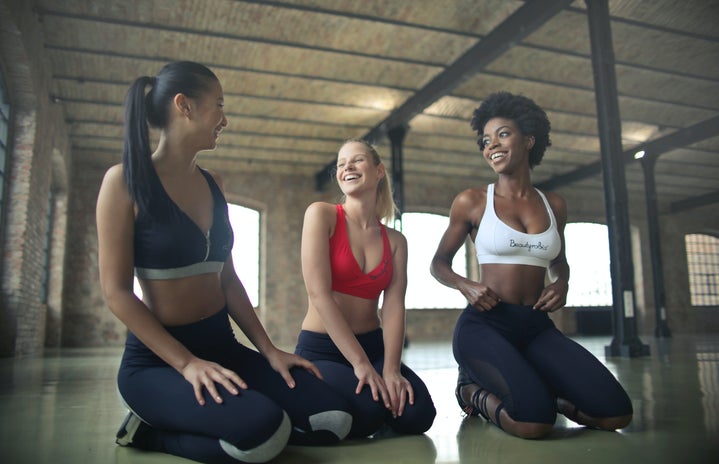When most people my age talk about a day they’ll never forget, they mention getting their license, or a great sweet sixteen party. For me, it’s a little different. I’ll never forget March 1, 2001, because it was the day I was diagnosed with cancer. I was just 6 years old at the time, and I didn’t fully understand what was happening when the doctor said I had a bone tumor known as osteosarcoma growing just above my knee. But, from the shocked looks on my parents’ faces, I knew it was big. The rest of the day is a blur. We went from doctor to doctor, office to office, as my new medical team explained my treatment plan to my parents and me.
My treatment had me in the Dana-Farber/Children Hospital Cancer Center (DF/CHCC) three days a week for just a little longer than a year. With chemotherapy having started, my hair had begun to fall out, and I was feeling sicker than I knew possible. It was strange being bald, not just on the top of my head, but my face as well; I was losing my eyebrows and lashes. It felt unnatural every time I looked in the mirror, so I began dressing in pink, so as to balance out the lack of hair. Wednesdays were the longest days because that’s when I had to go in for treatment. But the staff at DF/CHCC offers so many entertainment options to its patients that you almost forget why you’re there. I may have spent hours tethered to an IV that delivered my medications, but all I remember are the endless arts and crafts projects I did, or the time spent with nurses and doctors I came to see as friends. (Not to mention hours and hours of board games.) This was especially helpful in distracting me from the more medical side of treatment.
When my chemotherapy session was over, I’d head to my room on 7 West, DF/CHCC’s own treatment wing. The similarities between the Jimmy Fund Clinic and the hospital inpatient area are plenty; there’s a surplus of activities in the craft room, tons of movies to watch and games to play, and people to hang out with who understand just how much a simple smile can mean to a child in the hospital.
My birthday fell on a treatment day—cancer doesn’t give you time off for your birthday—so I spent it with my friends at DF/CHCC. They held a small party in the activities room for me. Some of the patients I was friendly with stopped by, as did all nurses on their breaks. One of them even played a song for me on his guitar. Honestly, it was one of the better birthdays I’d ever had. It was like I was at home, in the company of friends and family. The fact that I was in a hospital barely crossed my mind. If it weren’t for the IV in my arm, I probably would have forgotten completely.
Over time everything became normal, almost comforting. The DF/CHCC became like a second home to my family and me. In fact, when adults always told me how strong or brave I was, their compliments were met with a blank stare. Maybe it was because I was only six at the time and didn’t fully grasp the whole situation, but as far as I was concerned, cancer wasn’t that bad—and neither was the discomfort of an IV line, or the overall feeling of tiredness that my body had succumbed to. I think there were days I almost enjoyed treatment because it meant I got to be around so many nice people. My parents played a big role in fostering that positive outlook. They made sure I didn’t curl up into a ball of depression and hide from the world during treatment, and helped me live as normal a life as possible. And then there were the special benefits: I went to summer camps for kids with cancer where I met some of my best friends. The Red Sox are huge supporters of DF/CHCC, so I got to go to a lot of games and even got to meet a few players. It really proves that DF/CHCC doesn’t just take care of their patients inside the hospital, but outside as well.
After months of treatment it became clear that surgery was my best bet for beating the tumor that was on my right leg. I met with Mark Gebhardt, MD, a surgeon at Boston Children’s Orthopedic Center. He explained that because of where the tumor was in my leg, I had two surgical options: he could either replace the knee and surrounding bone with a metal duplicate, or perform a rotationplasty, where he’d remove my knee and attach my shinbone and ankle to the thigh bone. In the process of doing that, he’d rotate it 180 degrees so that I would have a new “knee” formed by the rotated ankle and foot. A prosthetic leg and foot would make up the difference in height.
It’s a complicated surgery, but the metal prosthetic option would have prevented me from any activity that put large amounts of pressure on the bone, like running. As an active kid, the possibility of life without any type of running wasn’t all that appealing, and the rotationplasty would allow me to continue living my life just the way it was. So that’s what my doctor suggested, what my parents suggested, and what I chose. There were, of course, other choices, including one where they would simply replace the bone with the tumor with a metal rod. However, this choice not only prohibited my ability to live a more active lifestyle (no gymnastics or running in general), but also was less effective in keeping the cancer from coming back. (There was always going to be the chance of relapse, but with rotationplasty, it was considered less likely.) I’ve never once regretted the decision, although it took some time adjusting to a prosthetic leg. I attended physical therapy to relearn to walk. And then there was adapting to the reactions of others around me—the stares and questions, primarily. Nevertheless, I would greet every stare, point, or “mommy look at her leg” with a small smile to show that I was not going to let any part of this adjustment separate or segregate me from everyone else. I’m now 17, and living my life just like all my friends. I’ve spent a week in a forest as part of a wilderness survival program, hiked in Haiti, and climbed rocks along the beaches in Maine. Cancer treatment can be long and tiring, but it can also remind you of what’s important. As a cancer survivor, I feel more alive than ever. Sure, I have challenges like any other teenager, but very little really scares me because I know I have the strength to get through it. Maybe that’s the bravery all those adults were talking about when I was younger. If so, I’m proud to say they were right.
Next year I will be entering college as a freshman, and I enthusiastically await the experience that lies ahead of me. Although the idea of living on my own is an exciting one, I often wonder what I will do if my leg breaks apart, and I am miles away from home. This, of course, is not the only obstacle that is unique to me and my life, but I always remind myself that 17 years later, I have yet to face a problem I was not able to push through with determination and help, with the people and institutions that care. Another 4 years—or the rest of my life for that matter—is not going to be any different of a story.

